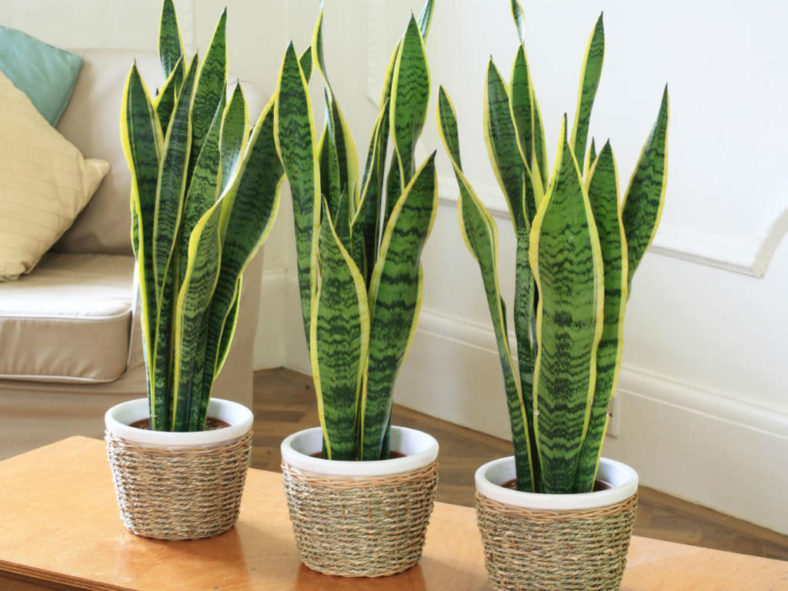Sansevieria is a historically recognized genus of plants native to Africa, notably Madagascar, and southern Asia, now included in the genus Dracaena based on molecular phylogenetic studies. Sansevierias are valued for their interesting appearance and durability. Although the most common species are known as Snake Plant or Mother-in-Law's Tongue for their long, pointed leaves that stand upright in the pot, other species grow from compact rosettes and reach mature heights of only 4 inches (10 cm). Because Sansevierias thrive with minimal care and live for many years, they seem nearly indestructible. They are suitable for planting outdoors in USDA Plant Hardiness Zones 10b through 11b.
Light
Place Sansevierias in moderately bright or filtered light. Good locations include a spot in front of a bright, sunny window covered by a sheer curtain. Although the plant tolerates low light, bright light brings out the colors in the leaves. However, intense light may cause the leaf edges to turn yellow.
Watering
Allow the soil to dry completely before watering, and then water deeply until water drips through the drainage hole. Allow the pot to drain, and discard the water in the saucer. Never let the soil become soggy, and the pot stand in water. Water sparingly throughout the winter. Like most succulent plants that store water in their leaves, Sansevieria rots quickly in excessively wet soil.

Temperature
Place the Sansevieria at an average room temperature. Protect the plant from drafts and cold temperatures, as it is damaged at temperatures below 50 °F (10 °C).
Feeding
Feed the plant once every three weeks throughout the summer. Use a general-purpose fertilizer for houseplants diluted to half the strength suggested on the container. Sansevierias are light feeders, and too much fertilizer makes the leaves fall over.
Repotting
Repot the plant into a larger container when the roots outgrow the pot. Sansevierias thrive and may produce blooms when their roots are crowded. Fill the container with lightweight commercial potting soil.
Remove dust by wiping the leaves with a soft, damp cloth. Avoid commercial leaf-shine products, which may damage the leaves or cause them to take on a rusty appearance. Cut off any leaves, even those with the soil, if damaged or blemished.
Source: sfgate.com
Links
- Back to genus Sansevieria
- Succupedia: Browse succulents by Scientific Name, Common Name, Genus, Family, USDA Hardiness Zone, Origin, or cacti by Genus